Authorities warn of the hefty fine imposed on people who try to climb Uluru after the ban
With just one day left to climb Uluru before its official closure, there will be a hefty fine for those who try and scale the rock.
Travel
Don't miss out on the headlines from Travel. Followed categories will be added to My News.
In less than 48 hours, rock climbing hopefuls looking to scale Uluru will be faced with a hefty fine if they try and reach the top of the landmark.
But with a small window remaining before the climb is officially closed, hundreds of tourists are lining up in a last-ditch attempt to scale the rock before the official ban is put in to place on Saturday.
From October 26, visitors to the Red Centre will be turned away from attempting to summit the iconic Australian landmark, after the Uluru-Kata Tjuta National Park board of management decided to take the option off the table.
The board has long stated it felt climbing Uluru was disrespectful to the spiritual significance of the landmark and the safety risks posed by the climb were too great. According to the ABC, in 2010, the board said that once the proportion of people climbing fell below 20 per cent of visitors to the park, they would push for a permanent closure.
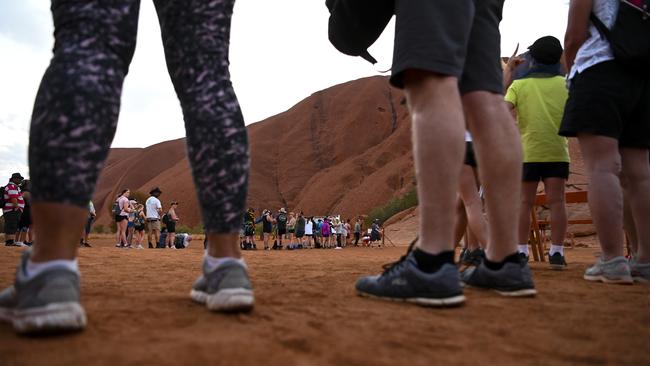
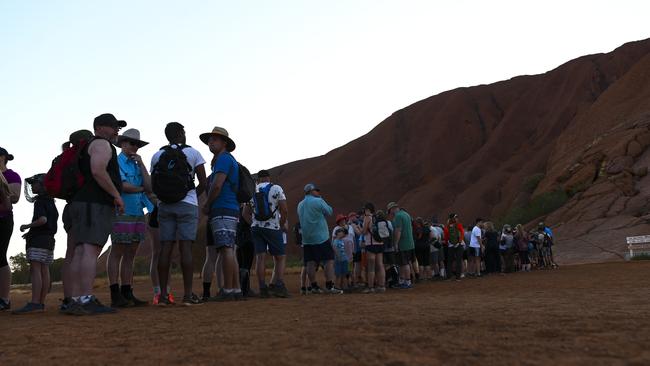
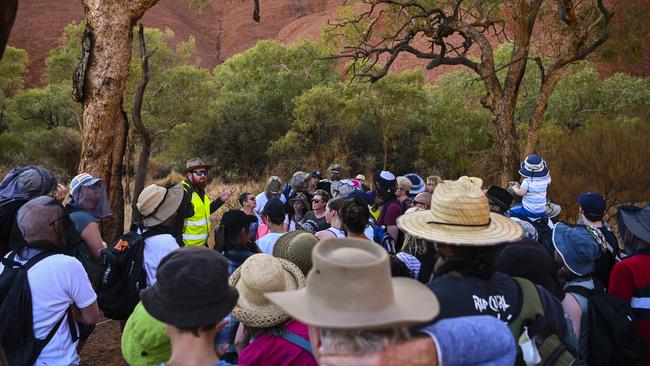
Since the date was set for the ban back in October 2017, the park has been welcoming more and more visitors to Uluru, with an average of nearly 10,000 extra visitors a month in the six months leading up to Saturday’s closure. In July alone, 57,000 visitors came to the park — up from 42,000 the year before, reports the ABC.
While the vast majority of locals support the controversial move to ban people from climbing Uluru, some of the tourists are questioning why local indigenous traditional owners would discourage tourist dollars.
Melbourne tourist Stefan Gangur, 51, echoed the sentiments of other people who opposed the decision to impose the ban from October 26 in recognition of the rock’s cultural significance to the Anangu people.
“What are people doing out here? It is part of the economy and how it runs out here” he told AAP.
“You are shooting yourself in the foot, as long as everyone respects it is okay.
“It is no secret a percentage of the money from the national park passes goes back to the Aboriginal people.”

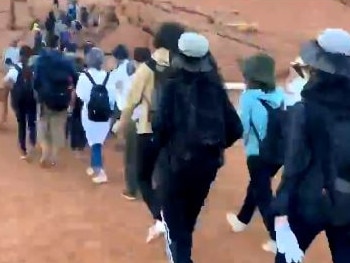
The ban is expected to lead to a drop in foreign visitors, particularly Japanese, given they were the most committed to climbing, unlike European visitors who often complained it was still open when Anangu opposed it.
From Saturday, visitors will no longer be able to use the chain and trail to climb the rock, and by Sunday the dismantling of the structure will begin.
Speaking to news.com.au, a Parks Australia spokesman said while they expect visitors to respect the laws, there will be substantial measures in place to stop anyone who ignores the new law — including fines of more than $10,000.
“Although we expect our visitors to respect the law and the wishes of traditional owners when they visit, significant penalties can be issued to those who deliberately break the law,” the statement read.
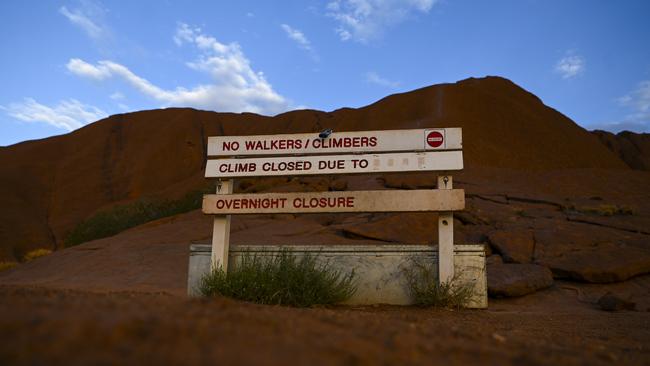
“If a serious offence is pursued by Parks Australia it could attract court ordered fines of more than $10,000.”
From Saturday, anyone who chooses to ignore the ban will be a breach of the Environmental Protection and Biodiversity (EPBC) Act, and infringement notices will be issued to visitors attempting to do so. A new fence will be installed at the base of the climb and the area will be regularly patrolled.
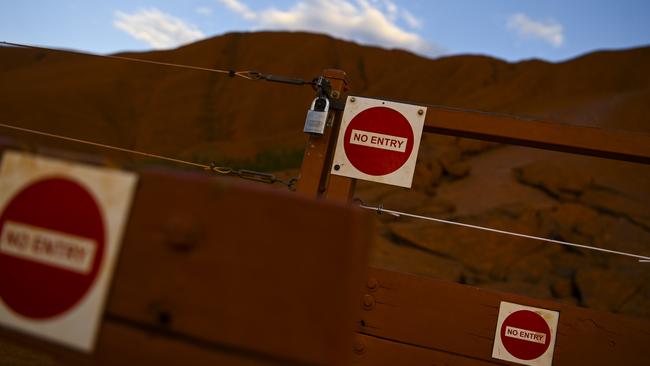
Parks Australia said rangers and wardens will be patrolling the area, and able to issue infringement notices in accordance with the EPBC Act regulations for suspected contraventions of the regulations.
If an infringement notice is issued the penalty amount can be up to 20 per cent of the maximum penalty that a court could impose for the relevant offence.
If an infringement notice is not paid the Director of National Parks may refer the matter to the Commonwealth Department of Public Prosecutions for criminal prosecution.
Earlier, a video posted to Twitter taken today shows just how many are desperate to reach the top on the second last day before the ban comes in to place.
Posted by ABC journalist Oliver Gordon, the short clip shows hundreds of people lining up before 7am at the entry of the rock climb.
The line snakes around the base of Uluru, with the video stopping at the entry point of the climb.
One day out from Uluru climb closure, this is the line at 7am. pic.twitter.com/fxs344H6fV
— Oliver Gordon (@olgordon) October 23, 2019
With AAP
Originally published as Authorities warn of the hefty fine imposed on people who try to climb Uluru after the ban



